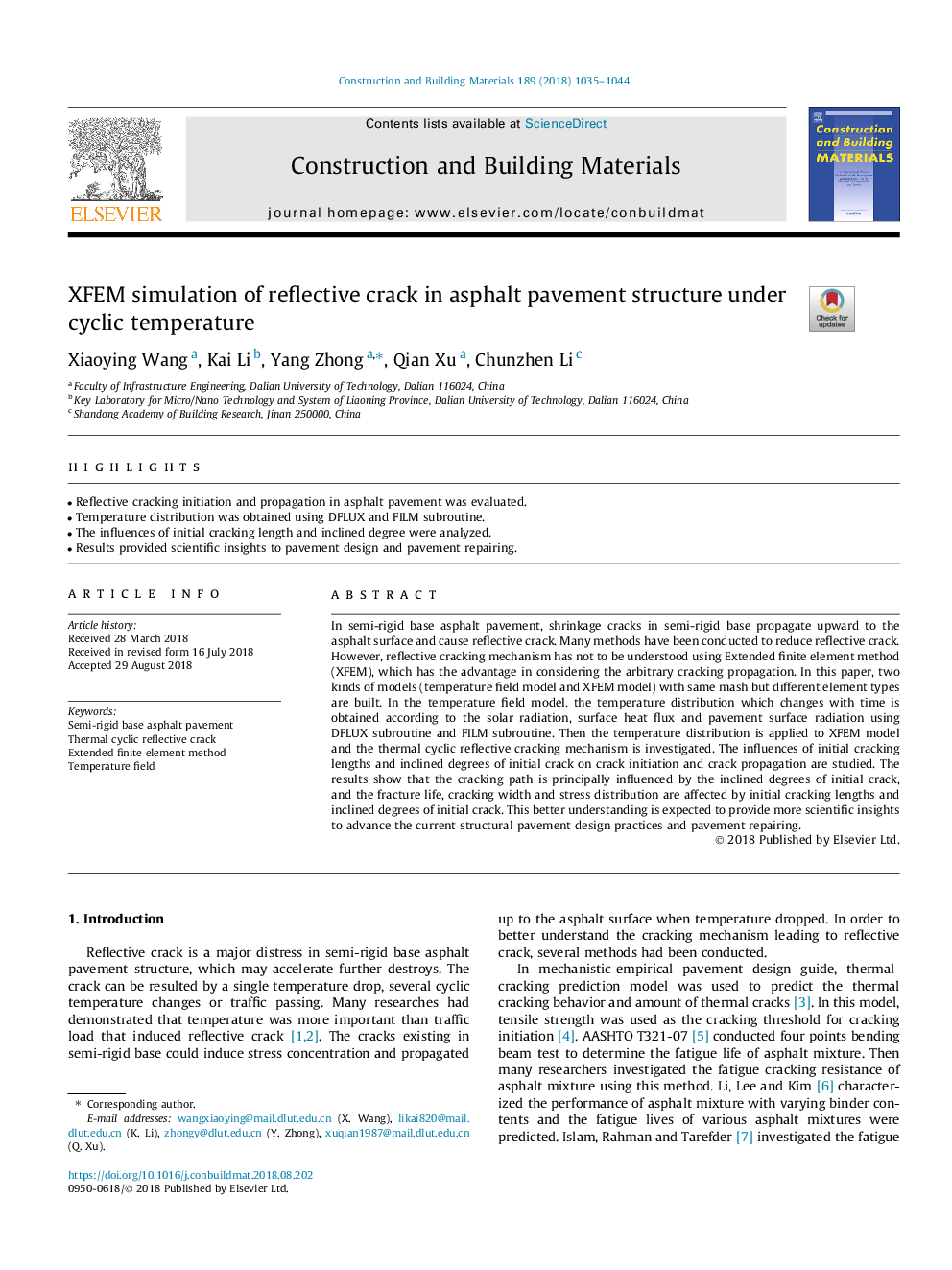| Article ID | Journal | Published Year | Pages | File Type |
|---|---|---|---|---|
| 10145798 | Construction and Building Materials | 2018 | 10 Pages |
Abstract
In semi-rigid base asphalt pavement, shrinkage cracks in semi-rigid base propagate upward to the asphalt surface and cause reflective crack. Many methods have been conducted to reduce reflective crack. However, reflective cracking mechanism has not to be understood using Extended finite element method (XFEM), which has the advantage in considering the arbitrary cracking propagation. In this paper, two kinds of models (temperature field model and XFEM model) with same mash but different element types are built. In the temperature field model, the temperature distribution which changes with time is obtained according to the solar radiation, surface heat flux and pavement surface radiation using DFLUX subroutine and FILM subroutine. Then the temperature distribution is applied to XFEM model and the thermal cyclic reflective cracking mechanism is investigated. The influences of initial cracking lengths and inclined degrees of initial crack on crack initiation and crack propagation are studied. The results show that the cracking path is principally influenced by the inclined degrees of initial crack, and the fracture life, cracking width and stress distribution are affected by initial cracking lengths and inclined degrees of initial crack. This better understanding is expected to provide more scientific insights to advance the current structural pavement design practices and pavement repairing.
Related Topics
Physical Sciences and Engineering
Engineering
Civil and Structural Engineering
Authors
Xiaoying Wang, Kai Li, Yang Zhong, Qian Xu, Chunzhen Li,
